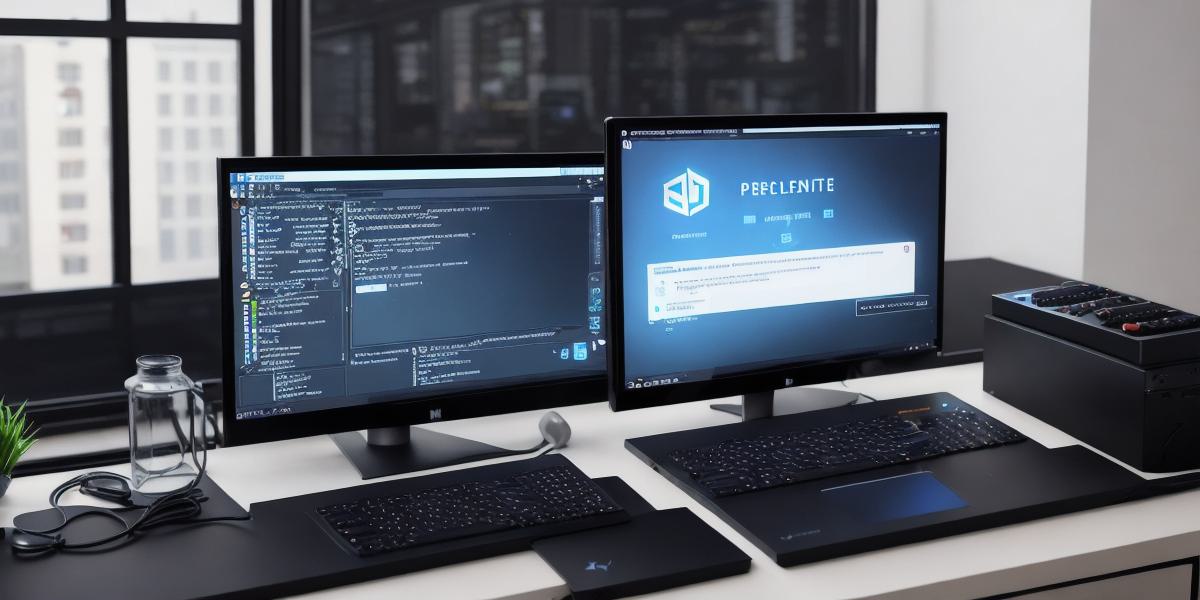The world of gaming is constantly evolving, and blockchain technology has emerged as a game-changer for the industry. By creating your own blockchain, you have the power to revolutionize gaming in numerous ways, such as improving security, transparency, and ownership rights for players. In this comprehensive guide, we’ll explore how you can do just that.
Introduction: The Benefits of Creating Your Own Blockchain
Before we dive into the specifics of creating your own blockchain, it’s important to understand the benefits it brings to gaming. Here are a few key advantages:
Improved Security
Blockchain technology is known for its security features. By using a decentralized system, you can reduce the risk of hacking and ensure that players’ data is secure and protected from unauthorized access. This can help build trust and confidence in your game, which can ultimately lead to increased player engagement and loyalty.

Greater Transparency
Blockchain technology also offers greater transparency in gaming transactions. Every transaction on the blockchain is recorded and stored in a transparent ledger, which means that players have access to real-time information about their gaming activities and assets. This can help reduce fraud and ensure that players are treated fairly.
Ownership Rights for Players
Finally, by creating your own blockchain, you can give players greater ownership rights over their gaming assets. With blockchain technology, players can have full control over their assets, including the ability to buy, sell, and trade them as they see fit. This can help incentivize player participation and encourage players to invest in your game.
Creating Your Own Blockchain: A Step-by-Step Guide
Now that we’ve discussed the benefits of creating your own blockchain, let’s explore how you can do just that. Here are a few steps you should follow:
1. Choose a Platform
There are several platforms available for creating your own blockchain, including Ethereum, Hyperledger Fabric, and Corda. Each platform has its own unique features and capabilities, so it’s important to choose the one that best fits your needs.
2. Define Your Use Case
Once you’ve chosen a platform, you need to define your use case for the blockchain. This includes determining what types of transactions will take place on the blockchain, such as buying and selling in-game assets or earning rewards through gameplay. You should also consider the specific security requirements and data privacy needs of your use case.
3. Design Your Smart Contracts
Smart contracts are self-executing agreements that can automate the enforcement of rules and regulations on your blockchain. You’ll need to design your smart contracts to ensure that they are secure, transparent, and effective in achieving your desired outcomes.
- Test and Launch Your Blockchain
Once you’ve designed your smart contracts, you can test and launch your blockchain. It’s important to thoroughly test the blockchain before launching it to ensure that it’s functioning as expected and is secure against potential threats.
Real-Life Examples of Gaming on the Blockchain
Now that we’ve covered the basics of creating your own blockchain, let’s look at some real-life examples of gaming on the blockchain. Here are a few:
CryptoKitties
CryptoKitties is a blockchain-based game that allows players to breed and sell digital cats. The game uses Ethereum technology to create a unique and secure platform for buying, selling, and trading cats. Players have complete ownership of their cats and can use them as a form of currency or trade them with other players.
Decentraland
Decentraland is a blockchain-based virtual reality game that allows players to build and own their own virtual worlds. The game uses Ethereum technology to create a decentralized platform for buying, selling, and trading in-game assets. Players have complete control over their virtual worlds and can use them as a form of currency or trade them with other players.
Splinterlands
Splinterlands is a blockchain-based game that allows players to collect and battle monsters. The game uses Ethereum technology to create a secure and transparent platform for buying, selling, and trading in-game assets. Players have complete ownership of their monsters and can use them as a form of currency or trade them with other players.
Conclusion: The Future of Gaming on the Blockchain
The world of gaming is constantly evolving, and blockchain technology has emerged as a game-changer for the industry. By creating your own blockchain, you have the power to revolutionize gaming in numerous ways, such as improving security, transparency, and ownership rights for players. As we’ve seen from real-life examples like CryptoKitties, Decentraland, and Splinterlands, blockchain technology has already transformed the way we play games, and we can expect even more exciting developments in the future.
